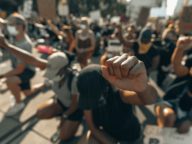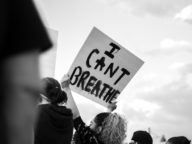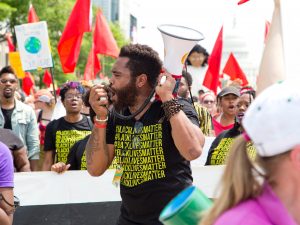[Editor’s Note: As issues and topics around race, inequality, and racism continue to surface in our society and communities, the concept of “critical race theory” (CRT) has entered the conversation. Some Christians wholly embrace the concept, others reject it as “unbiblical,” and many others fall somewhere in between. We want to present two articles about CRT to help you process and discern what it is, and how it relates to the gospel of Jesus Christ.
Read the second article in this mini-series here called, “Unpacking Critical Race Theory (CRT) for Christians: Toward a Better Theology of Race”.
Written by Rasool Berry. A version of this article was originally published on Medium Aug 20, 2020.]
Christians in America live in a time of great racial tension. Cries for justice flood the streets and dominate our national discourse. The killings of George Floyd, Breonna Taylor, Ahmaud Arbery, and many others sparked hashtags that read BLACK LIVES MATTER in what some consider the largest protest movement in our nation’s history.[1] But are these cries the results of real, structural injustices or simply the result of an insidious ideology manufacturing rage to indoctrinate us to a new social order? Is the fight for racial justice a legitimate roadmap to peace, or is it a road to nowhere fabricated by proponents of critical race theory (CRT)?
Christians are often made to choose between the two extremes of wholeheartedly embracing CRT or rejecting all it has to say about race and justice. But is such a dichotomy necessary or even the right way to think about this issue? A quick look at how Christians engage other secular social theories gives us great clarity regarding how to move forward.
How Christians engage secular social theories
In a recent post[2] analyzing our society’s competing theories of justice, Dr. Tim Keller observed the virtues and vices of the major theories of justice which shape the American discourse. He identified how the American understanding of justice is usually informed from four major theories he labeled: libertarian, liberalism, utilitarian and post-modern. Keller noted, for example, that what he called the “liberalism theory of justice” upholds individual rights while maintaining that we don’t need a consensus on morality. He pointed out the internal inconsistency of that view because, without morality, what are “rights” and why should we uphold them? In responding to this theory, Keller aptly observed that in spite of the “contradictions and fatal flaws in Liberalism’s approach … Christians can agree with much in this justice theory.”
Similarly, Christian philosopher J.P. Moreland argues that common grace enables us to learn from all people. Common grace is the doctrine affirming that God allows everyone including those who don’t believe in him to understand truths about reality. As a result of common grace, we can learn from philosophers, scholars and activists, regardless of their personal beliefs. In fact, as Moreland notes, several biblical authors leverage the value of common grace, such as Paul and Jude. Paul favorably quotes the pagan prophet Epimenedes in Acts 17:28, and Jude quotes the noncanonical Assumption of Moses in Jude 3 to support his argument. So the Bible clearly endorses the usefulness of common grace as a means to learn about the world. In spite of these truths, many Christians deny that critical race theorists have anything to teach us.
Over the last 20 years, however, Christians have gained insights from postmodern theorists that have helped them fill out their own theological maps with more detail.
Millard Erickson, a leading evangelical systematic theology scholar, wrote a book called Truth or Consequences: The Promise and Peril of Postmodernism. In it he noted that the Christian reaction to postmodernism tended to only focus on its perils, while very few sought to explore the promise of insights in this worldview. Erickson recognized that, in spite of its flaws, the postmodern worldview had many penetrating insights: “Postmodern theory can help us understand the relationship between knowledge and power, the importance of narratives, the role of communities, and the value of suspicion.” Erickson does this while still describing the perils of postmodernist theory. Biola University Professor Tim Muehlhoff, who writes on philosophy, communications, and apologetics, also acknowledged: “I have found the writings of postmodern thinkers to be useful in understanding issues of gender, race, and identity,” even while he offers strong critiques of that worldview.
Critical theorists and Christians often disagree on the answers to key philosophical questions such as the existence of truth or the moral grounding of social justice, BUT we do agree that questions surrounding these issues are crucial. Both the critical race theorists who don’t identify as Christians (contrary to popular belief, some do, as we will see below) and Christians who uphold the Scriptures agree that human liberation from tyrannical oppression is good, and that our justice system should treat everyone fairly regardless of their economic status, race, ethnicity or gender. We, no doubt, disagree on some aspects of what “human liberation” or “justice” look like. But we all agree that racial discrimination is wrong. C.S. Lewis wrote: “The man who agrees with us that some question, little regarded by others, is of great importance can be our friend. He need not agree with us about some answer.”[3]
But it’s not just in philosophy or postmodernism where we see Christians apply what Moreland refers to as “conceptual integration” of biblical truths with ideas discovered in secular arenas. We see it in the field of psychology as well.
For most evangelical Christians, it is not controversial to describe someone as suffering from narcissism or to urge them to get therapy. We approve of these in spite of the fact that “narcissism” and “psychotherapy” were both the innovations of Sigmund Freud, the 20th century neurologist and founder of psychoanalysis. Freud regarded religion as an “illusion” that should be shaken off by reason and science. His worldview and convictions would be considered “anti-Christian,” and yet we freely use his concepts.
We do conceptual integration when we celebrate the statement: “We hold these truths to be self-evident, that all men are created equal, that they are endowed by their Creator with certain unalienable rights.” It’s well established that the author of the American Declaration of Independence, Thomas Jefferson, was not an orthodox Christian, but a deist. Because he believed that miracles were myths, he cut out mention of them in his Bible. He also rejected the historicity of the resurrection, the doctrine of the atonement, and the idea that God could be known or called by name. He owned slaves because he didn’t believe that Black people were made in the image of God.[4] Even though Jefferson’s words and personal life did not reflect Christian orthodoxy, we find his “roadmap” of American representative democracy helpful and consistent with Christian teaching.
Why is it that when it comes to theories of justice, postmodern theory, psychology or the Declaration of Independence, we can use conceptual integration, but when it comes to CRT, or the Black Lives Matter movement, the typical reaction by some Christians is to reject them wholesale and denounce anything or anyone associated with them? Why can’t many Christians see that common grace belongs to theorists who critique racial injustice? A common error is to conflate CRT with Marxism because many scholars and activists who endorse CRT find value in Marxist critiques of power. Ironically, many Christians seem to believe that when it comes to critiquing power, Marxists have a monopoly.
But the Scriptures clearly offer a critical theory of the world that shines a light on oppression. Ecclesiastes 4:1 reads:
Again I looked and saw all the oppression that was taking place under the sun:
I saw the tears of the oppressed—
and they have no comforter;
power was on the side of their oppressors …
Well, before we go there, we must understand what critical theory is.
The first word in the approach reveals its intention: “critical” was inspired by philosopher Immanuel Kant.[5] To Kant, “critique” meant examining and questioning the validity of universally accepted theories of his time. Similar to how Kant––and later Karl Marx––critiqued prevalent theories in their disciplines, Max Horkheimer sought to build on those previous critical approaches with a focus on social theory. The assumption of Kant, Marx, Horkheimer and others was that traditional theories were uncritical of power and injustice, and therefore unable to affect human liberation. Horkheimer and his colleagues were trying to understand why capitalism and authoritarian Marxism failed to provide human freedom. So, they tried to make a map that could lead people to freedom.
What are critical theorists critical of?
To put it simply, critical theorists offer critiques on what they see as oppressive abuses of power. The abuses of power critical theorists challenge can be the result of wealth, ideological dominance (hegemony), or the power to shape language and/ or physical domination via state-sanctioned violence, to name a few. Critical theorists seek to critique and undermine traditional theories because they see these narratives as part of the establishment’s abusive power.
Horkheimer’s narrative was that his “map” would get to the destination of human liberation. The concept of human emancipation from violence and oppression is noble and can be good if we have the right definition of “emancipation.” This is where CT’s cohesion and premise break down.
There’s a sophisticated sleight-of-hand maneuver inherent in critical theory’s philosophy. In order to undermine traditional theories, critical theorists often reject all narratives that seek to explain the world, with the notable exception of itself, because clearly critical theory is a narrative that seeks to explain the world. The CRT narrative is that the problem with the world is powerful people who create narratives that they say we must all believe in. The way we experience human liberation is to reject their narratives. Some have readily recognized this inherent inconsistency.[6]
So that’s critical theory, but what about critical race theory (CRT)? We have to fast-forward, about 40 years after Horkheimer’s writings, to the 1970s.
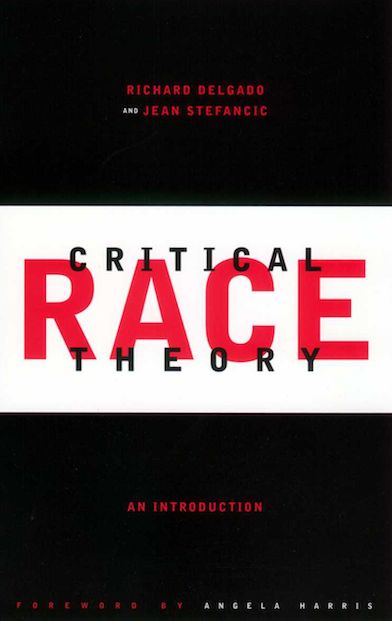
Critical race theory
The civil rights movement of the ‘50s & ‘60s failed to bring about the changes hoped for and expected. Years passed since the Civil Rights Act of 1964 and other sweeping legislation (such as the Voting Rights Act, the Fair Housing Act, etc.) passed with the promise of justice, and yet racial inequalities still existed and in some cases worsened. For example, many studies show that schools are more segregated now than they were 50 years ago).[7] There seemed to be a need for another map.
Critical race theory sprang up in the mid-1970s, as a number of lawyers, activists, and legal scholars across the country realized that the heady advances of the civil rights era of the 1960s had stalled, and, in many respects, were being rolled back. Realizing that new theories and strategies were needed to combat the subtler forms of racism gaining ground, early writers such as Derrick Bell, Alan Freeman, and Richard Delgado put their minds to the task.
Like critical theory, CRT sought human liberation, with a particular focus on race and racism. It was relatively unknown by those outside the legal studies and activist communities until recently. Contrary to what some assume, while every critical race theorist sees systemic racism as a problem to confront, not everyone who sees systemic racism as a problem to confront is a critical race theorist.
One important thing critics of CRT often overlook is that theorists are not monolithic, nor ideologically aligned, in their approaches to ending racial injustice. They are unified more by what they are against (what they see as racist abuses of power) than by a common worldview or methodology. For example, law professor Vinay Harplani is a friend I met in college. He also was the last person awarded a Derrick Bell Fellowship to work with the late Professor Derrick Bell in his legal studies class. After countless hours of listening to Professor Bell share his philosophy, one thing became clear to Vinay. Bell was inspired by a radical revolutionary, but it wasn’t Karl Marx; it was Jesus Christ. Vinay, who is not religious himself, offered his writing as proof of Bell’s faith orientation. Bell wrote a book titled, Gospel Choirs: Psalms of Survival In An Alien Land Called Home, and even Bell’s unique contribution to legal studies pedagogy was the use of parables and stories to educate. But the most meaningful evidence was the way Bell shared with Vinay how his faith and worldview were central to his activism. His faith was the source of his legal work and theory. While Bell, the person widely considered the founder of critical race theory, pointed to Jesus and not Marx as his motivation, there are others whose point of reference would be the reverse. And that’s actually the point. Because CRT is more of a methodology than a philosophy; those who leverage it for their work will have a wide range of worldviews.
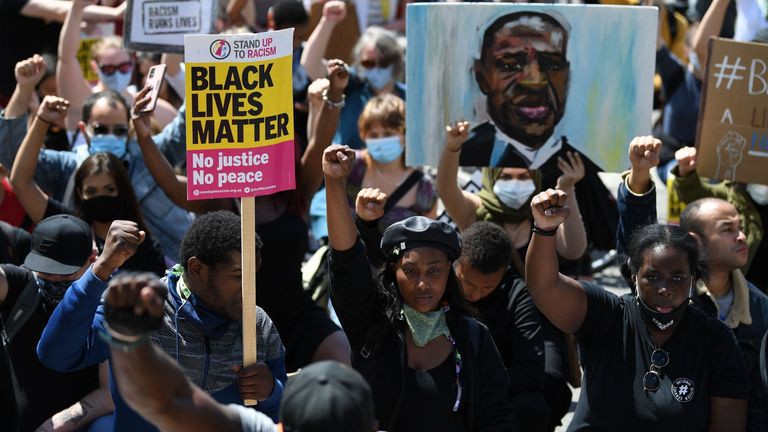
Some Christians argue that recent Black Lives Matter (BLM) protests and activism should be rejected by Christians because the BLM organization may be influenced by critical race theory. They conflate the spontaneous movements of outrage against racialized violence with the young organization, even though the movement includes millions of people from all over the world, unaffiliated with the BLM organization. To these observers, the entire movement to end racism is considered guilty by association of being un-American and evil. This is a well-worn tactic, used with great effectiveness many times before.[10]
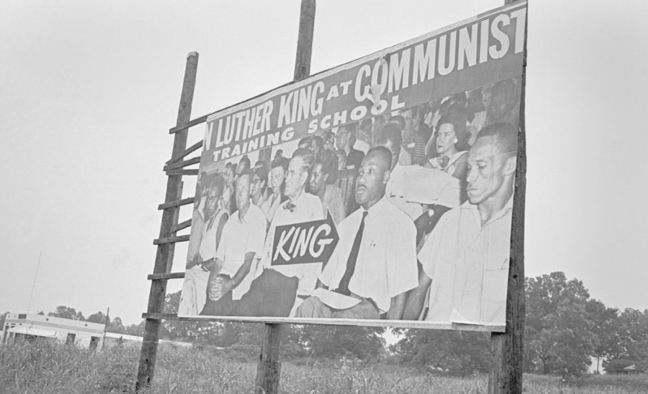
According to many Christians, the conceptual “maps” that point out racism end in division, violence, or the end of America as we know it. There are legitimate concerns and critiques to be leveled against any organization, including BLM, when that organization’s version of human liberation contradicts the Bible. However, the structural inequality and race-based oppression CRT decries are historical truths that are part of our nation’s past and present. That is a fact. The oppression of the poor by the rich, the foreigner by the secure citizen, and the racial minority by the ethnic majority, are all particularly egregious to the Lord (Micah 6:10–13). And yet, the problem of sin as described in the Bible is actually much worse than a power play of the elite over the poor. Christianity’s analysis of sin says that the problem is within each of us as well (Romans 3:10–19). Sometimes those with less power can sin against each other.
There are legitimate criticisms of the story CRT tells, but much like with the postmodernism that informs it, the church focuses on seeing the faults of CRT. But why is it so hard for some Christians to see the value of CRT’s critique of racism?
The value of CRT’s critique of racism
Christian author Andy Crouch helps us answer that question. He wrote in his book Playing God: Redeeming the Gift of Power[12]:
The powerful have a hard time seeing their own power.
Unmapped power is a perilous thing. Unmapped power is wasted power.
When people map out power by pointing out racial or gender privilege, it can cause our defenses to go up. I know that defensive reflex first hand, because when my male privilege is called out (and whenever it still needs to be called out), my guard goes up. According to Crouch’s analysis of mapping, if there is such a thing as “white privilege,” the last people to realize it would be white people because such power would be “unmapped.”
What are the implications if I acknowledge that lighter skin is “unmapped power” in our culture? What does it mean to recognize that in America’s history, white supremacy is a “perilous thing”? It doesn’t mean that all white people are racists. But it does mean that more racism and bias exists than people think, because they are unaware that they are recipients of power.
Christians should be aware that our sin often blinds us and makes us susceptible to using culture and power for self-justification. Culture often blinds us to what the Bible is saying. Power allows us to insist that our blinded version of reality MUST BE TRUE. Look at Peter—an apostle!—he let his Jewish upbringing keep him from eating with Gentile fellow believers (Galatians 2:11–13). His culture blinded him to his wrong-doing, and his power as an apostle permitted the status quo that kept the Gentiles as second-class citizens in the church; that was, until Paul used his power as an apostle to publicly critique Peter’s abuse of power (Galatians 2:14). This is what CRT is helpful to do. It maps racial power that Christians fail to see. But CRT only echoes what Christians have been saying for centuries.
For example, anti-racism author Ibram X. Kendi notes in his book, Stamped From The Beginning: The Definitive History of Racist Ideas in America, that on April 18, 1688, a group from the Mennonite Church in Philadelphia made an appeal to end slavery. “They wrote: ‘In Europe there are many oppressed’ for their religion, and ‘here those are oppressed’ for their ‘black colour.’” Both oppressions were wrong. Actually, as an oppressor, America “surpassed Holland and Germany.”[13] In what was the first known written argument that slavery was morally wrong, the Mennonites made an argument that America was systemically racist. African American Christians would make the same arguments themselves.
In 1787, Richard Allen and Absalom Jones left the Methodist Church which used its power to marginalize them, so they started the first Black church, the African Methodist Episcopal Church. They had to fight all the way to the Supreme Court in order to be allowed to worship independently. Allen recognized systemic racism in the American church that necessitated the founding of the Black church and used the legal system to challenge it.
From Nat Turner, to Sojourner Truth, Harriet Tubman, and Frederick Douglass, Black Christians critiqued the prevailing theories that dehumanized and marginalized them; and called out racial injustice. A helpful map to guide them to liberation was the Bible.
Herman Bavink, the Dutch Reformed theologian, noted systemic racism when he traveled to the USA in 1908. Upon reflecting on his observations and readings of W.E.B. DuBois, Bavinck wrote, “In the future, there truly lurks a danger, and in the future a struggle will doubtless be fought between black and white, a heated struggle, fanned into flame by the strong antipathy on both sides.”[14] Bavinck essentially predicted over 100 years ago the social unrest we’re experiencing today.
And writing over 50 years ago, Dr. Martin Luther King Jr., writing from a jail in Birmingham, Alabama, because he opposed systemic racism, appealed to traditional theories of justice when he wrote: “The God we worship is a God of justice and he has ordered human beings toward justice and this [America’s] systemic racism dishonors God and violates human nature.”[15]
In other words, Christians got a very long head start on CRT. Before anyone conceptualized CRT, the need for Black liberation was clear. But CRT has been helpful, for instance, to point out the particular ways in which white supremacy has mutated from legalized de jure institutional racism (explicit laws like “separate but equal”) to de facto institutional racism (implicit ways discrimination continues illegally). But attempts to use CRT to discredit anti-racism work is ahistorical and inaccurate. CRT is actually critical of previous movements for human liberation, and only exists because of them. For example, even though the Fair Housing Act of 1964 made housing discrimination illegal, CRT helps us understand how housing discrimination still happens.[16]
The Black church began to speak and act in opposition to the injustices and abuses of power they experienced in America long before Karl Marx, Max Horkheimer, or the Frankfurt School founders were even born.
Criticism of racial injustice is not the same as critical race theory (and even CRT is not monolithic). Those of us who have experienced the oppressive force of institutional racism have learned how to gain insights from CRT and also reject the aspects that contradict a biblical worldview.
The same is true with BLM. The hashtag #BLM predates the organization and is much, much broader in its scope and impact. There are only 16 BLM chapters, according to their website. But of the millions who have come out and protested both in America and throughout the world, probably less than 1% are actively involved in the inner workings of the organization’s chapters. And based on BLM’s philosophy or organizing, the only ideological requirement to participate in BLM is that you care about Black life.[17]
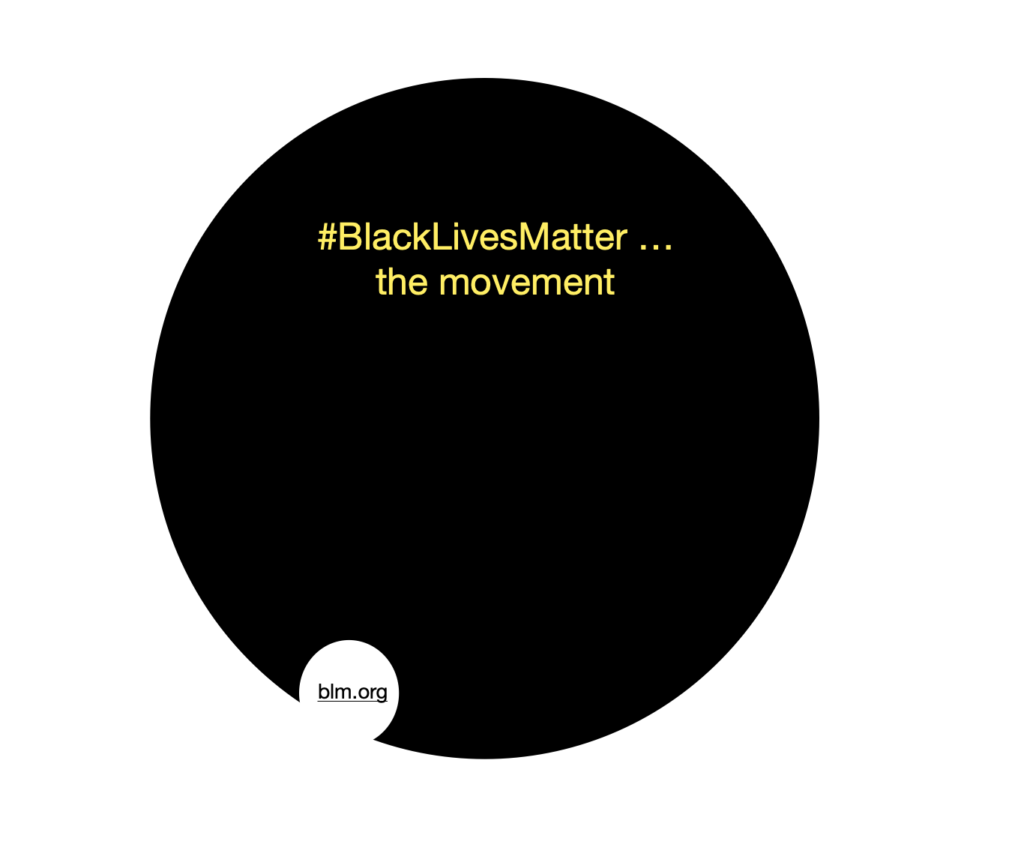
The BLM movement is much bigger, broader and more fluid than the organization. Unlike the previous civil rights movement of the 1960s, it’s not based in the Black church, and as a result will include ideologies and perspectives that the church finds offensive, false, and even problematic. But isn’t it strange that we can agree with Keller’s observation that there is some value in secular theories of justice, Moreland’s value of aspects of postmodernism, embrace Freud’s concepts of narcissism and psychotherapy, and even embrace the deist rhetoric of Thomas Jefferson, and yet find CRT and uttering “Black Lives Matter” contemptible, and anathema? Why is it held to such a different standard? Could it be that we are afraid of where that map will take us? As Dr. Keller has put it:
“The doctrine of sin means Christians are never as good and wise as their right beliefs should make them; the doctrine of common grace means that non-believers are never as bad or unwise as their wrong beliefs should make them.”
Those concerned about the influence of CRT on conversations about racial justice also need to remember that critiques of institutional racism and structural inequalities predate CRT by centuries.
Critical [g]race theory
But we don’t need to simply critique critical race theory. We need to understand it and explore the directions that this map can point us to. We need to discover how theories that seek to understand and overcome racial injustice help us find roads that we may have missed along the way.
Critical race theory exists because the church in America ignored the inherent biblical critique of systemic racism in America. The gospel reveals not only a personal pietistic plan of salvation, but a plan of restoration that redeems and restores. Jesus critiques unjust political, economic and social systems as well as personal sins. CRT is on the lookout for systemic, institutionalized racism and injustice. Because of its philosophical assumptions, CRT will not accurately analyze all it seeks to critique. But because of common grace, it will see things we should see; and because of our sin, we know we don’t always read the Bible rightly and so we need to listen to other voices. The critiques of Horkheimer, Derrick Bell, Kimberle Crenshaw are surpassed by Jesus. The gospel gives us insight to respond and subversively fulfil CRT with something greater––critical grace theory.
Critical grace theory is what Paul does when he writes:
“We have divine power to demolish strongholds. We demolish arguments and every pretension that sets itself up against the knowledge of God, and we take captive every thought to make it obedient to Christ. (2 Corinthians 10:5–6).
The same Paul that spoke of taking every thought captive, is the same one who quoted pagan scholars through his knowledge of the gospel. critical grace theory is applying common grace while at the same time being critical. That is what we do in affirming the statement “Black lives matter” while critiquing racial nihilism and the rejection of absolute truth or moral order that is sometimes associated with it.[19] Critical grace theory is proclaiming the good news that God cares about injustice while Jesus also empowers us to do justice, love mercy and walk humbly before our God. We can avoid the perils of CRT while fulfilling the promise of our call to challenge the world.
Endnotes:
- Cited from: https://www.nytimes.com/interactive/2020/07/03/us/george-floyd-protests-crowd-size.html
- Cited from: https://quarterly.gospelinlife.com/a-biblical-critique-of-secular-justice-and-critical-theory/
- Quoted by Tim Muehlhoff; Todd Lewis. Authentic Communication: Christian Speech Engaging Culture.
- Cited from: https://www.monticello.org/site/research-and-collections/jeffersons-religious-beliefs
- Cited from: https://plato.stanford.edu/entries/kant/#:~:text=The%20fundamental%20idea%20of%20Kant’s,1790)%20%E2%80%93%20is%20human%20autonomy.
- Walter Truett Anderson, The Truth About the Truth (New York: Tarcher/Putnam, 1995), p. 268
- Cited from: https://www.washingtonpost.com/news/answer-sheet/wp/2013/08/29/report-public-schools-more-segregated-now-than-40-years-ago/
- Richard Delgado & Jean Stefancic, Critical Race Theory: An Introduction (New York Press; 2001) p.3
- Cited from: https://www.encyclopedia.com/social-sciences-and-law/sociology-and-social-reform/sociology-general-terms-and-concepts/critical-race-theory
- Cited from: https://snccdigital.org/inside-sncc/international-connections/red-baiting/
- Cited from: https://kinginstitute.stanford.edu/encyclopedia/communism
- Andy Crouch, Playing God: Redeeming The Gift of Power (IVP, 2013) p.126
- Ibram X. Kendi, Stamped from the Beginning (Bold Type Books, 2016) p. 52
- Cited from: https://jameseglinton.wordpress.com/2020/06/05/bavinck-on-racism-in-america/
- Cited from: https://www.africa.upenn.edu/Articles_Gen/Letter_Birmingham.html
- Cited from: https://projects.newsday.com/long-island/real-estate-agents-investigation/
- Cited from: https://blacklivesmatter.com/about/ “We are expansive. We are a collective of liberators who believe in an inclusive and spacious movement”
- Jemar Tisby, The Color of Compromise (Zondervan, 2019) p. 24
- See the And Campaign’s framework of Moral Order and Social Justice at www.andcampaign.org
"*" indicates required fields
Share this!
About the Author


